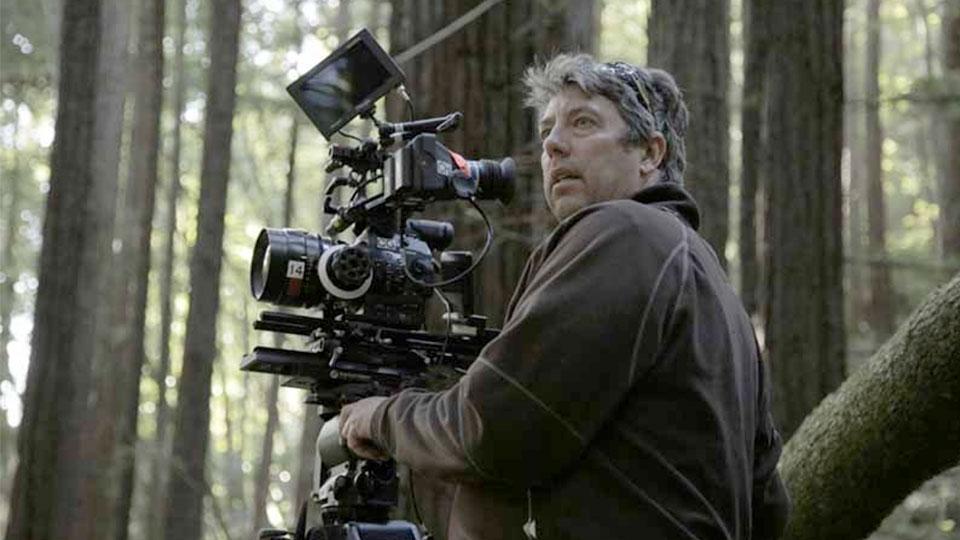Shane Hurlbut, A.S.C., is a Director of Photography who views the world differently than most cinematographers. After 16 years of shooting feature films traditionally, using cinema cameras and film stock, he was one of the first filmmakers to break ground and use the DSLR to make movies. The “inciting incident”¡ªto borrow a screenwriting term¡ªin his digital-filmmaking career was the introduction of the Canon 5D Mark II, which he took to immediately. According to Hurlbut, after many people insisted that you couldn¡¯t put images from a still camera up on a big screen, he became determined to make that happen.
His first project with the 5D Mark II was an alternative campaign for the movie Terminator Salvation, on which he was the Director of Photography. That experience taught him that the 5D was going to compel him to shoot movies in a new and different way.
In spite of all those who said it couldn¡¯t be done, Hurlbut then turned his attention to the film Act of Valor, which affirmed his exploration of the digital medium in earnest. He adapted practices that he had developed from years of shooting on film to the digital workflow: endless testing, preparation, and finding the right lenses to convey the nuances of the script.
Hurlbut¡¯s focus and pursuit are in the service of making the film, and finding the best way to tell the story with visuals. Whether he’s using the most cutting-edge digital technology, or 30-year-old lenses (or blending the two), the technology is merely the tool and is kept in service of the artist and the art¡ªand not the other way around.
One of the more interesting aspects of Shane Hurlbut¡¯s approach is that he considers digital cameras and technology in the same manner as you would traditional film stocks. Mixing digital ¡°emulsions¡± is one of his strengths¡ªhe picks the camera that will best render what he wants from the scene¡ªand doesn’t hold any unnecessary allegiance to a single camera. He selects the best tool for the job, and the best tool is the one that renders the look he envisions. Testing for the film Need for Speed, directed by Scott Waugh, illustrates this exactly, and demonstrates the lengths to which Hurlbut will go as he seeks to tell the story visually. He tested ¡°…nine different emulsions, one of them being 35mm Kodak motion-picture film.¡± The test, which cost something around six figures, helped to cement in his mind that different cameras behave in the same way as different emulsions, and that he could exploit not only the physical capabilities of the cameras, but also the inherent image qualities they produced.
Shooting Need for Speed was a technological achievement on many levels, one of which was filming with the Canon C500, which had only been released a month before. It was the camera that delivered the skin tones that Hurlbut was looking for, and its compact size, color space, and low-light sensitivity made it even more appealing to him.?
He gives his crew great credit for deftly handling the tech required to shoot Need for Speed. Hurlbut describes the experience as ¡°¡you started running at one hundred miles an hour and you didn¡¯t stop until you were exhausted on that day.¡± It took several weeks of filming before Hurlbut and his crew were able to get a full day of success with the camera, but in the end, trailblazing is about risking failure and not giving up until you succeed. It is this risk-taking, pioneering spirit that enables him to pursue his projects confidently, as well as his rarefied sense of lighting¡ª¡°a gift that can¡¯t be squandered,¡± says the CEO of his production company.
Another breakthrough on?Need for Speed?was the act of intercutting the footage seamlessly from many different cameras. Traditionally, you wouldn¡¯t change film stock or digital cameras in the same scene; this can jar your audience right out of the movie. With certain scenes, it becomes impractical or dangerous to use the same camera, or multiples of the same cameras to get the shots required. This became apparent when Hurlbut and crew were shooting the racing scenes, where each camera was chosen for what it brought to the shot, be it small size, wide exposure latitude, or weight considerations. This created a situation in which footage from the?Canon C500, an ARRI Alexa, a?Canon 1DC, and a?GoPro HERO3?camera had to be edited together. While the multiple-camera setup was necessary to create the shots, it did lead to the delicate problem of intercutting the footage smoothly.?
Rather than having artifacts and mismatched color space or noise patterns interfere with the visual flow of the movie, Hurlbut researched and planned on using the Cinnafilm Dark Energy system to remove the individual image textures from each camera, and then replace them with a film grain across all the intercut footage, homogenizing it into a consistent visual experience.
Such bold choices, and a willingness to risk failure without feeling defeated, define Shane Hurlbut, who is currently embarked on a nationwide, three-month Illumination Experience Cinematography Tour to make his methodology, practices, and filmmaking philosophy available to cinematographers, ranging from veteran filmmakers to beginners. The goal of the classes is to break down the traditional walls of film study by bringing the classes to the students. By engaging the students in discussions and hands-on practical exercises that simulate real-world filmmaking situations, he helps the students break down the walls that can inhibit their artistic growth, just as he continues to break down the walls of traditional filmmaking.


